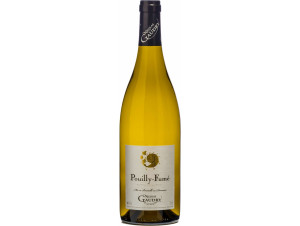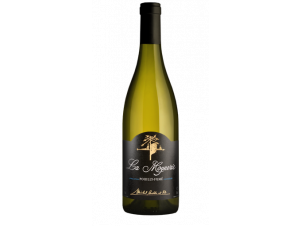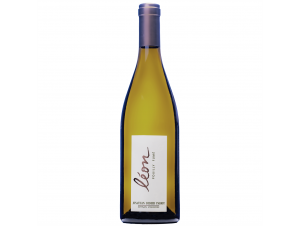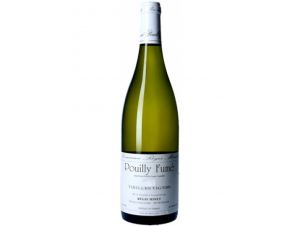You have no items in your shopping cart.
Wine Pouilly-Fumé
The Pouilly-Fumé appellation is one of the leading appellations in the Loire. The wines of this AOC are exclusively white wines, made from a single grape variety: Sauvignon Blanc. Pouilly-Fumé wines are often mistakenly confused with those of Pouilly-Fuissé, an AOC of Burgundy, whereas they have, as we shall see, nothing to do with each other! Read more on Pouilly-Fumé
-
Top Selling
-
Top Selling-24%
-
Top Selling
Appellation Pouilly-Fumé
The Pouilly-Fumé vineyard dates back to Roman times
The growing of grapes began in the region during the Roman occupation, around the 5th century AD. A Roman road, dedicated to trade, passed through the area and was called "Pauliacum super fluvium ligerim". "Pauliacum" originally means "the marshes", it is the same root found in another well-known name: Pauillac. Over time, Pauliacum became Pouilly, and "Pauliacum super fluvium ligerim" became over time "Pouilly sur le fleuve de la Loire".
The real development of the AOC took place in the Middle Ages, thanks to the Benedictine monks. Originally, mass wine was white, as it was less staining, so it was for these purposes that the Sauvignon Blanc began to be particularly cultivated in the region. The land remained the property of the Clergy, then the nobles until the French Revolution, when the peasants reclaimed their land, and took over the crops in their names.
The proximity of the appellation to the Loire allowed the transport of wines to other regions of France, to Paris and for export as well. Unfortunately the vineyard of the Loire was particularly affected in the 19th century by Mildew and then Phylloxera, and many hectares had to be uprooted. It was not until the beginning of the 20th century that the vines were gradually replanted, after being grafted to American vine strains.
In 1937, the appellation was one of the first to be registered and recognised as such. These wines are among the most exported from France, notably to Great Britain, the United States and Russia.
The Pouilly-Fumé appellation covers 1,320 hectares, in the communes of Pouilly-sur-Loire, Saint-Andelain, Tracy-sur-Loire, Saint-Laurent-l'Abbaye, Mesves, Saint-Martin-sur-Nohain, Garchy, communes belonging to the Nièvre, east of the Loire River.
Pouilly-Fumé is the Loire incarnation par excellence of Sauvignon Blanc
This terroir seems made for the Sauvignon Blanc to flourish at its best, both in terms of climate and soil. The climate is indeed temperate with a continental influence, summers are relatively hot, winters are rather cool, but frost is quite rare. Rainfall is fairly regular throughout the year.
The soils of the appellation are mainly made up of 4 types of components: argilo-siliceous, Kimmeridgian marl, hard limestone and flint clay. These soils are permeable, and therefore keep rainwater well. Sauvignon Blanc, the only grape variety authorised in the appellation, flourishes particularly well on this soil, which gives it these slightly "smoky" aromas. This is where the name of the appellation comes from. The flint-laden soils tend to give grapes aromas often described as "gunflint". The soils in the region were formed in various prehistoric periods, in the Cretaceous and Upper Jurassic in particular.
The sea covered the area and retreated several times over the past millions of years: the soil and subsoils are therefore very rich, and there is even a majority of small oyster marl, a type of soil composed, as its name suggests, of small comma-shaped oyster shells.
To make Pouilly-Fumé, the vinification is traditional and quite free on the use or not of oak barrels for maturation. It is up to the producer to choose what he wants to do, depending on his terroir, the vintage and his personality, of course.
Pouilly-Fumé and Pouilly-Fuissé are paronyms: their names are close, but they otherwise have nothing in common: Pouilly-Fuissé is also made from a white grape variety, but this is Chardonnay made in Burgundy. This grape variety is very different from Sauvignon Blanc, so the resulting wine has its own profile, very different from Pouilly-Fumé.
What to expect when tasting a Pouilly-Fumé
The colour of Pouilly-Fumé is quite pale, with a golden hue. Depending on the soil, the nose of the wine can vary significantly. Blackcurrant and boxwood on the most clayey soils, flowers in the marls and "pierre à fusil" in the most flinty soils. The nuances can therefore be very important. Citrus aromas such as orange, lemon and grapefruit are the common denominators of all terroirs, as well as fresher menthol notes.
On the palate, the wine is firm, full, very aromatic. The whole is very elegant and fragrant.
The great vintages of the Pouilly-Fumé appellation
The millesime 2005 is often described as the vintage of the millennium! More recently, the 2014, 2015 and 2017 vintages are also really successful vintages that will offer you some great tastings.
What dish to drink a Pouilly-Fumé with?
These wines are great as aperitifs or with salmon dishes, seafood such as oysters or scallops. White meats with a cream base such as poultry or veal in sauce are also very good matches for Pouilly-Fumé. In terms of cheese, it is ideal to drink these wines with goat cheeses, such as Crottins de Chavignol.
2 Pouilly-Fumé estates to discover
Eric Louis Estate:
This property is a real family story for the Louis family, where generations have followed one another since 1860. The terroirs are varied, and the family produces on these lands wines from all the great AOCs of the Sancerre region, such as Quincy, Menetou-Salon and of course Pouilly-Fumé. The vines of this Pouilly are planted on soils that give them very smoky aromas: the wine is therefore the perfect embodiment of its AOC.Joseph Mellot Vineyards:
Far from being solely family-owned, this vineyard is even historic: the name "Mellot" has existed on this vineyard since the 16th century. Since 2005, on the untimely death of her husband Alexandre, Catherine Corbeau-Mellot has taken over the reins of the property and has not stopped pursuing her husband's vision. This wine is particularly fine and elegant.
Vallée de la Loire appellations



































 TWIL - Achat de Vin
TWIL - Achat de Vin


